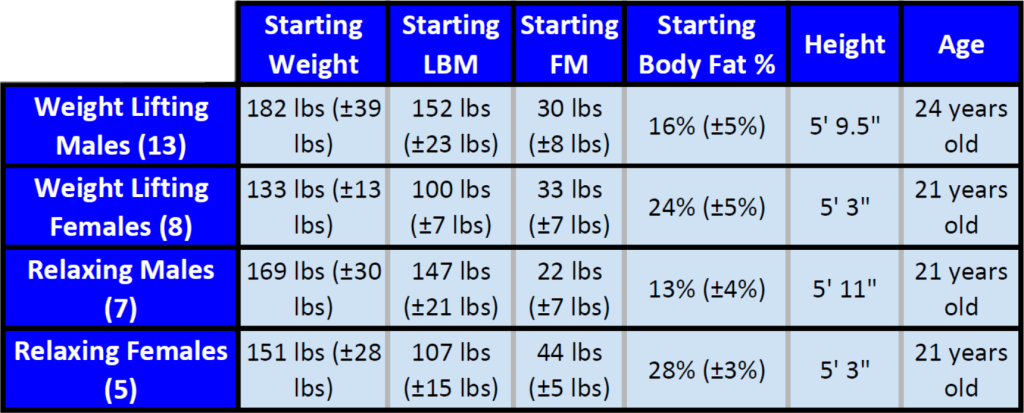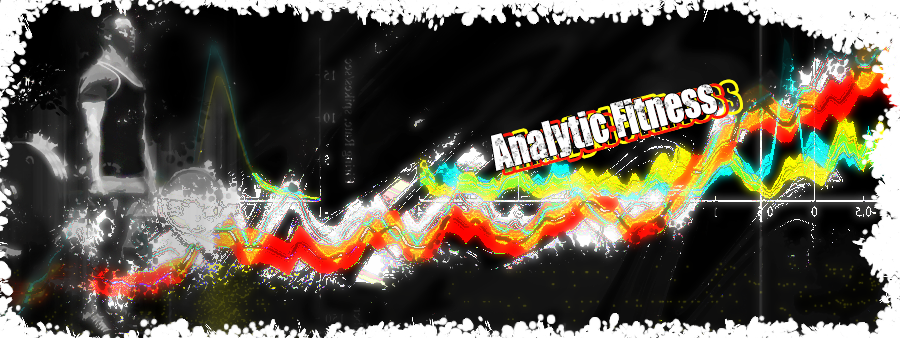Early newbie growth vs strength
I’ve looked at studies of advanced lifters so far. Today, I want to take a look at a study for newbies.
What’s up with newbie gainz? What’s going on underneath that skin on the physiological level?
The study we’ll dissect to answer that is a classic (if 1994 qualifies as a classic year…) for resistance training research. The group is Staron, et al. 1994. The title is Skeletal muscle adaptations during early phase of heavy-resistance training in men and women.
Methods
In order to bring focus to these questions, the researchers narrowed down the study to 8 weeks and specifically targeted the quads in participants who had not previously lifted weights.
There was a group of men and women that lifted 2 times a week for 8 weeks and a group of men and women that did nothing. The lifters did 3 exercises each session: squat, leg press, and extension. They started and ended the sessions with 15 minutes of calisthenics. On Mondays, they did 2 warm up sets and then 3 sets of 6-8 reps for each exercise. On Fridays, they did 2 warm up sets and then 3 sets of 10-12 reps for each exercise. Trainers made sure that participants used correct technique and the heaviest weight possible for the rep ranges. Every 2 weeks, participants tested their 1RM in each lift to make sure they adjusted the weight for the rep ranges as they grew stronger.
The participants had the usual stats measured: weight, height, age, and body fat %. In addition to that, they had biopsies of their quads and blood tests every 2 weeks. That allowed the researchers to examine the changes in the muscle tissues and in the hormones over the course of the study, rather than just at the start and end.
There was no dietary intervention with this study. More recent studies have participants drink a protein shake after each training session in order to maximize results. Because this study predated many notable studies of protein synthesis, protein shakes, and training, the researchers did not have the participants do that.
Results
Below are the starting stats of the participants. As always, they are the group averages and rounded to the nearest whole number for ease of viewing.

Descriptive data for Staron, et al. 1994
None of the stats above changed in any statistically significant way.
Strength, as measured by the 1RM, increased in the lifters across all time points. The greatest increases were in the first 2 weeks. Increases continued over the whole study, but the magnitude was not as great after the first 2 weeks. Overall, the lifters doubled their strength in the different lifts. Because the researchers reported the strength stats in relative numbers, there’s no absolute weight numbers for me to give.
When the researchers examined the biopsies of the quad muscles, they found no changes in CSA for the lifters over the course of the study. That is, the lifters did not grow bigger quad muscles in the 8 weeks that they trained…despite doubling their strength.
What happened??
When examining the muscle fibers of the biopsies, the researchers found that the breakdown of fiber types changed over the course of the study for the lifters. The scale of these changes are on the µm level and the researchers reported a whole chart of many dozens of numbers. Duplicating them here would not make the point any clearer. Over the study, the breakdown of the fiber types of the muscle changed without the muscle size changing. There were neural changes that happened in the muscle fibers in response to the training that changed the muscle tissues without changing their sizes.
The only change in the blood work was an increase in testosterone levels and a decrease in cortisol for the lifting males.
Implications / Thoughts
The researchers explained in the discussion section of the paper that even by 1994 there had been numerous studies showing newbie size gainz. However, those studies were 12 or 20 weeks long and measured only the start and end points. This study showed that in the first 2 months of newbie lifting, muscle fibers are not blowing up. Neural changes are what’s blowing up. Among so many other cellular things going on that do not correspond to size gainz, the neural changes have the result of increasing the strength of the muscles. The longer studies showed that the size gainz eventually come along, but only after rapid neural gainz.
When we’ve been around lifting for a while, we come to know the mythic newbie gainz. This study highlights how those size gainz come over a number of months and are not instantaneous. Zoomed out, that initial muscle growth seems rapid. However, natural muscle growth is a gradual process. Natty lifters would do well to remember this.
In Conclusion
The phenomenon that this study examined is one that all lifters go through. Knowledge of this process can be helpful to anyone who shows a friend the weight area for the first time or to a trainer that is working with a client new to lifting. Rapid strength gainz can be utilized to motivate first-time lifters. Whether that’s to help them achieve a strength goal or to keep them coming back while the slower process of changing their body composition takes place, this shared experience among lifters can help everyone on their journey to be the healthy and fit person they want to be.
If you have any questions about this study or anything I said, please feel free to leave a comment. I will get back to you and others may have insight to offer, too. If you have any questions or topic suggestions that you would like answered as a post, then please email me at robert@analyticfitness.com.
Don’t forget to like Analytic Fitness on Facebook, or follow me on Twitter or the other social medias!
Coming Attractions!
Astute readers may have asked themselves, why hasn’t he stratified the results by gender? Aside from the question of whether there is a difference, there’s a whole category on this site for female specific topics! Clearly this site cares about female lifters! Why was nothing said in the results?!
Well, dear readers, that’s because the gender-based examination of this study is coming next week! Stay tuned for part two of this study!





No Responses